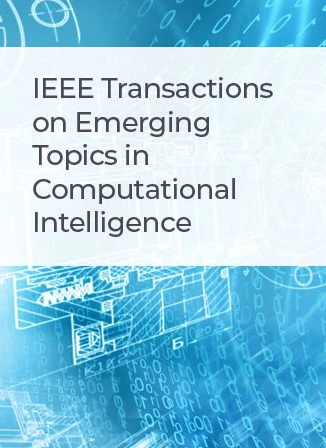Optimized Leader-Follower Consensus Control of Multi-QUAV Attitude System Using Reinforcement Learning and Backstepping
IF 5.3
3区 计算机科学
Q1 COMPUTER SCIENCE, ARTIFICIAL INTELLIGENCE
IEEE Transactions on Emerging Topics in Computational Intelligence
Pub Date : 2025-02-21
DOI:10.1109/TETCI.2025.3537943
引用次数: 0
Abstract
This work is to explore the optimized leader-follower attitude consensus scheme for the multi-quadrotor unmanned aerial vehicle (QUAV) system. Since the QUAV attitude dynamic is modeled by a second-order nonlinear differential equation, the optimized backstepping (OB) technique can be competent for this control design. To derive the optimized leader-follower attitude consensus control, the critic-actor reinforcement learning (RL) is performed in the final backstepping step. Different with the attitude control of single QUAV, the case of multi-QUAV is composed of multiple intercommunicated QUAV attitude individuals, so its control design is more complex and thorny. Moreover, the traditional RL optimizing controls deduce the critic or actor updating law from the negative gradient of approximated Hamilton–Jacobi–Bellman (HJB) equation' square, thus it leads to these algorithms very complexity. Hence the traditional optimizing control methods are implemented to multi-QUAV attitude system difficultly. However, since this optimized scheme deduces the RL training laws from a simple positive function of equivalent with HJB equation, it can obviously simplify algorithm for the smooth application in the multi-QUAV attitude system. Finally, theory and simulation certify the feasibility of this optimized consensus control.基于强化学习和反演的多quav姿态系统优化领导-随从共识控制
研究了多四旋翼无人机系统的最优领导-从者姿态共识方案。由于QUAV姿态动力学是用二阶非线性微分方程来建模的,因此优化后阶反演技术可以胜任这种控制设计。为了得到最优的领导-追随者态度共识控制,在最后一步进行了关键行为者强化学习(RL)。与单机姿态控制不同,多机姿态控制由多个相互通信的姿态个体组成,其控制设计更为复杂和棘手。此外,传统的强化学习优化控制从近似的Hamilton-Jacobi-Bellman (HJB)方程平方的负梯度推导出评论家或行动者的更新规律,从而导致这些算法非常复杂。因此,传统的优化控制方法难以应用于多quav姿态系统。然而,由于该优化方案是从一个简单的与HJB方程等价的正函数中推导出RL训练规律,因此可以明显简化算法,从而在多quav姿态系统中顺利应用。最后,理论和仿真验证了该优化共识控制的可行性。
本文章由计算机程序翻译,如有差异,请以英文原文为准。
求助全文
约1分钟内获得全文
求助全文
来源期刊

IEEE Transactions on Emerging Topics in Computational Intelligence
Mathematics-Control and Optimization
CiteScore
10.30
自引率
7.50%
发文量
147
期刊介绍:
The IEEE Transactions on Emerging Topics in Computational Intelligence (TETCI) publishes original articles on emerging aspects of computational intelligence, including theory, applications, and surveys.
TETCI is an electronics only publication. TETCI publishes six issues per year.
Authors are encouraged to submit manuscripts in any emerging topic in computational intelligence, especially nature-inspired computing topics not covered by other IEEE Computational Intelligence Society journals. A few such illustrative examples are glial cell networks, computational neuroscience, Brain Computer Interface, ambient intelligence, non-fuzzy computing with words, artificial life, cultural learning, artificial endocrine networks, social reasoning, artificial hormone networks, computational intelligence for the IoT and Smart-X technologies.
 求助内容:
求助内容: 应助结果提醒方式:
应助结果提醒方式:


